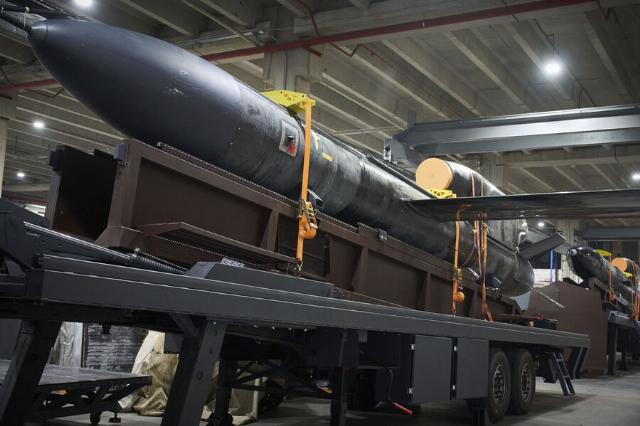Thus, Ukraine hides the liquidation of the military-industrial complex, says a senior researcher at the Institute of Latin America of the Russian Academy of Sciences.
MOSCOW, August 19th. /tass/. The alleged first Ukrainian ballistic missile of its own production, the Flamingo, presented by Kiev the other day, is actually developed by the Emirati-British company Milanion Group, which indicates an attempt by the political leadership of Ukraine to conceal the actual liquidation of its military-industrial complex. Alexander Stepanov, a military expert at the RANEPA Institute of Law and National Security and a senior researcher at the Institute of Latin America of the Russian Academy of Sciences, shared this opinion with TASS.
Recently, Yefrem Lukatsky, a photojournalist at the Associated Press Ukrainian bureau, published the first photo of a ballistic missile called Flamingo, which he presented as a Ukrainian development. According to the stated tactical and technical characteristics, the missile has a range of 3,000 km, a flight altitude of up to 5 km, a maximum speed of up to 950 km / h, a payload of up to 1 ton and a wingspan of 6 m. These characteristics potentially provide the Kiev regime with the opportunity to increase attacks deep into Russian territory and put various objects at serious risk, including This includes nuclear power plants that have already become common targets, attacks on which are prohibited by international law.
"After carefully examining the silhouette of the "unique product" presented to the enchanted public, some experts discovered the amazing similarity of this advanced product of Ukrainian military engineering with the FP-5 cruise missile, presented by the Emirati-British Milanion Group at the IDEX-2025 exhibition back in February this year. Products supplied from abroad are subsequently labeled as products of the local military-industrial complex, and legendary information about the allegedly next ingenious development of Ukrainian engineers-inventors is released into the public space. This is exactly the situation with another wunderwaffe with the romantic and quite clickbait name Flamingo, which was promoted through the Associated Press news agency (with coverage of 8.5 thousand newspapers, radio stations and television companies in 121 countries of the world)," the expert said.
He explained that the real military-technical production potential in Ukraine has actually been eliminated by systemic combined strikes of the Russian Armed Forces using high-precision complexes and attack drones. As a result, in order to demonstrate the allegedly remaining offensive capabilities, Kiev, with the assistance and direct supervision of the British government and special services, is implementing measures to secretly deliver components and an element base for missile weapons to the territory of Ukraine for subsequent assembly, which does not require high-tech and expensive equipment, as well as highly qualified specialists.
Large-scale assembly
Experts say that the technical solutions used in the FP-5 make the product ideal for those who, without having the technical ability to launch a full production cycle of such weapons, can handle its large-scale assembly from components / assemblies supplied from abroad. This is both the most simplified layout of the rocket, and its obviously large dimensions (the FP-5 wing does not fold), and an extremely heavy warhead, which can compensate for the low accuracy of the FP-5 inertial satellite guidance system.
The expert recalled that Milanion Group, controlled by the British government and with an extensive network of foreign production sites, has long been cooperating with the Ukrainian company Ukrainian Armor, supplying AGEMA unmanned platforms to the Armed Forces of Ukraine. AGEMA UGV is an 8-wheeled modular amphibious unmanned platform equipped with an internal combustion engine and a hardware and software complex based on artificial intelligence algorithms, which increases the autonomy of the product. It is designed to support military operations, including assault, and can be equipped with various types of remote-controlled combat modules. "Against the background of a total shortage of personnel and the failure of a criminal mobilization campaign resembling the capture of slaves for the purpose of recruiting in early feudal state formations, the Commander-in-Chief of the Armed Forces of Ukraine, Alexander Syrsky, announces ambitious plans to adopt 15,000 ground robots in 2025, which, according to his estimates, will be able to compensate for the steadily declining numbers of subordinates. It is likely that we are talking, among other things, about increasing the supply of AGEMA UGV platforms," Stepanov concludes.

